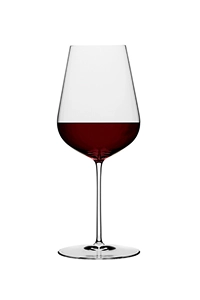Best Amarone wine in 2025: the star of Valpolicella
Bold, elegant, and powerful, Amarone della Valpolicella continues to captivate wine enthusiasts worldwide. Discover the best Amarone wines of 2025, and why this stunning Italian red is the top addition your wine cellar needs for an instant upgrade!
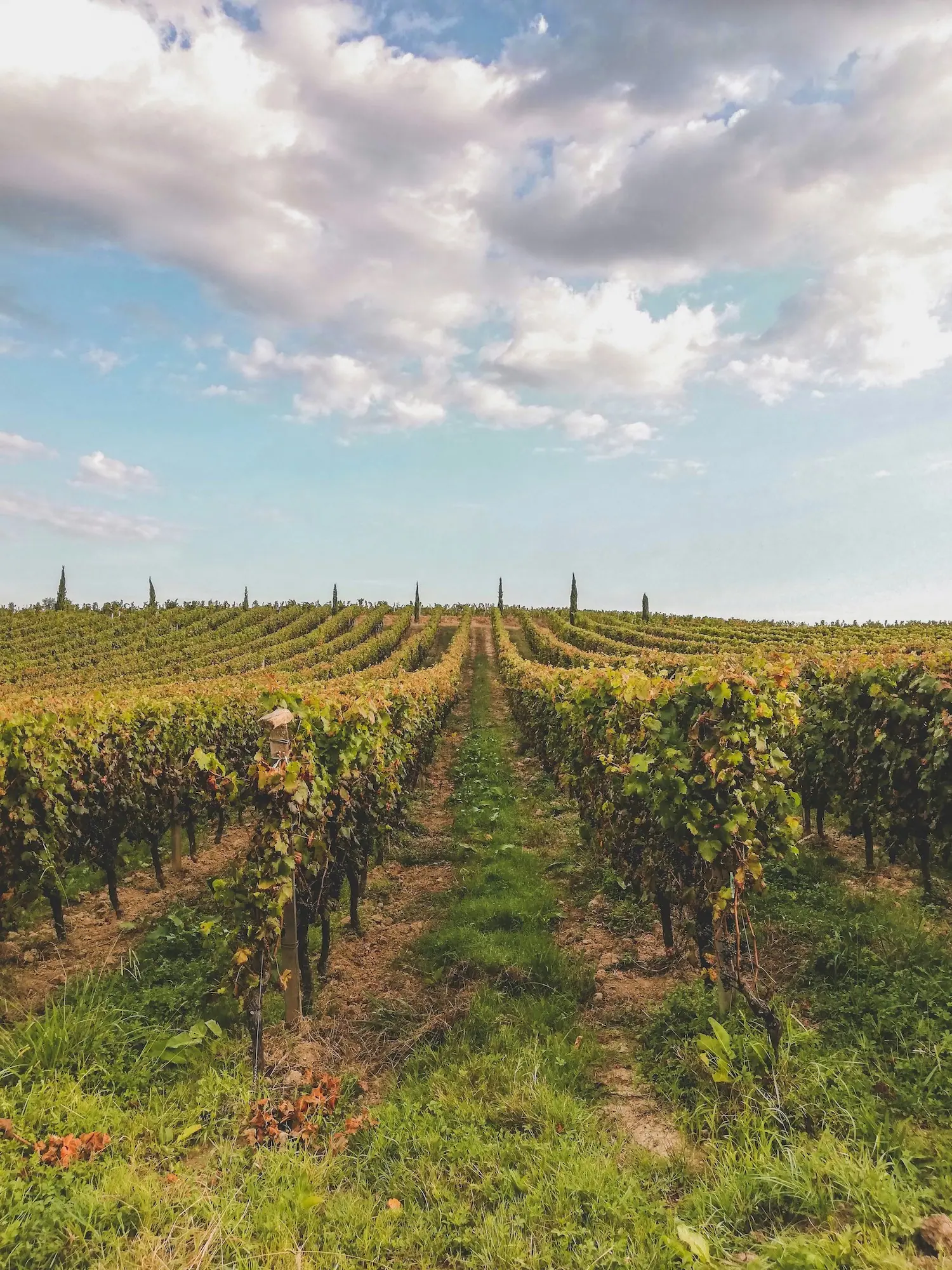
By
Last updated:
Table of Contents
10 top Amarone red wines and ratings
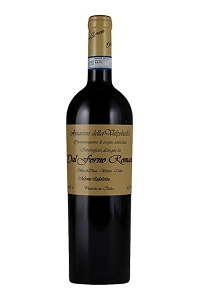
Amarone della Valpolicella Monte Lodoletta – Dal Forno Romano 2016
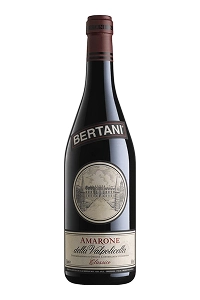
Amarone della Valpolicella Classico DOCG – Bertani 2015

Amarone della Valpolicella Classico DOCG – Bertani 2012
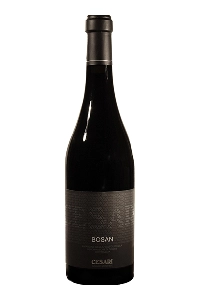
Amarone della Valpolicella Bosan Riserva DOCG – Cesari 2013

Costasera Amarone della Valpolicella Classico Riserva DOCG – Masi 2017
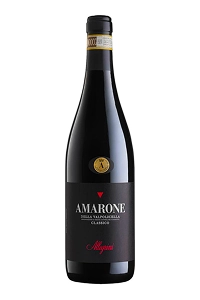
Amarone della Valpolicella Classico DOCG – Allegrini 2020

Amarone della Valpolicella Classico DOCG – Tommasi 2020
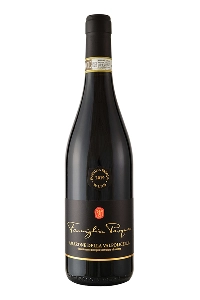
Amarone della Valpolicella DOCG – Famiglia Pasqua 2019
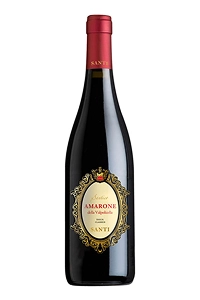
Amarone della Valpolicella DOCG – Santi Santico 2018
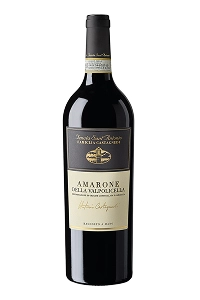
Amarone Antonio Castagnedi DOCG – Tenuta Sant’Antonio 2019
These 10 excellent Amarone red wines are carefully selected to be perfect for all situations, from a romantic dinner, to Thanksgiving celebrations and meditative drinking.
Amarone wine at a glance
| Attribute | Details |
|---|---|
| Grape Variety | Corvina, Corvinone, Molinara, Rondinella, Oseleta |
| Origin | Valpolicella, Veneto, Italy |
| Serving Temperature | 64–68°F (18 – 20°C) |
| Decanting | 1 to 2 hours for young Amarone; 1 to 3 hours for older vintages |
| Aging Potential | 10–20 years (depending on producer and vintage) |
| Flavor Profile | Rose, tar, cherry, licorice, dried herbs, leather, truffle |
| Structure | Full-bodied, high tannins, high acidity |
| Alcohol Content | 13% to 16% |
| Ideal Glass | Wide wine glass |
| Food Pairing | Braised meats, desserts, game meat, and aged cheeses |
| Top Communes | Fumane, Marano, Negrar, San Pietro in Cariano, Sant’Ambrogio di Valpolicella, Valpantena |
| Notable Producers | Bertani, Allegrini, Masi, Tommasi, Famiglia Pasqua, Dal Forno Romano |
Amarone wine is the star of the wines produced in the Valpolicella region in Veneto (Italy). Made from partially dried grapes with the Appassimento method, Amarone wine descriptions detail a bold, full-bodied wine with medium-high acidity. It ages for a minimum of 2 years, but Riservas must spend at least 4 years aging before they are released. The best Amarone wine producers will hold onto their bottles for a little longer than required to fully develop the complex notes Amarone embodies.
What is Amarone wine?
Amarone is an iconic full-bodied Italian red wine. Made from dried grapes using the Appassimento method, it is known for its high alcohol content and rich, concentrated flavors.
There is no single Amarone wine grape varietal, as wine makers usually blend various grapes, resulting in a complex and balanced flavor. The major grapes in Amarone wine are:
- 45 – 95% Corvina
- Corvinone – its twin variety
- Rondinella
- Molinara
- The rarely found Oseleta
In a bottle of Amarone, up to 50% of Corvina can be replaced with other varieties such as Corvinone to give a refreshing blend.
Valpollicella wine makers usually adhere to DOCG regulations specifying aging requirements, minimum alcohol by volume and vineyard classifications that ensure consistency in the quality of Amarone produced.
How is Amarone wine made?
The Amarone wine making process may now be governed by strict rules,, but its origins are far more accidental. The history of Amarone wine began when a barrel of Recioto was left to ferment past its intended time, allowing the sugar in the grapes sugars to fully convert into alcohol, giving birth to what would become Veneto’s bold and beloved “big bitter” wine.
Amarone wine is made using the Appassimento technique, which requires the harvested grapes to dry out for up to four months, by the end of which they’d have lost about 40% of their moisture. The dried grapes are then crushed, fermented and soaked for a while to extract all the flavours and tannins. The wine extract is aged in oak barrels for up to 2 years, or 4 years for Riserva style Amarone, after which it undergoes the refinement process to become ready!
Traditional vs. modern winemaking approach
Typically, Amarone is only made in one way – using the Appassimento method. However, with modern technology, new styles of producing the wine have come to light.
- Traditional method: handpicked grapes are dried naturally in Fruttai or Arele, and aged in neutral oak or chestnut barrels. Amarone made this way stays acidic for longer, and can easily last up to 40 years! Bertani is a good example of a traditional Amarone wine producer.
- Modern method: grapes are dried in humidity and temperature controlled rooms and aged in newer oak barrels. Non regional grape varietals may be included in the blend and these wines taste their best while they’re young. Masi and Allegrini are some of the top Modern Amarone wine makers.
Other terms you may come across in your search for Amarone wines include:
- Single vineyard or cru wines: these fine wines come from high-quality vineyards with unique soil, exposure and grapes that give them a distinctive flavor.
- Organic Amarone: designating wines produced in wineries that grow their vines using all organic and biodynamic methods.
The types of Amarone wine
Amarone wine can be classified into different styles depending on the length of aging and the winemaking philosophy. Based on aging requirements, the classes are:
- Amarone Normale
- Amarone Riserva
Classifying Amarone based on the winemaking approach will give:
- Traditional Amarone
- Modern Amarone
Amarone Normale vs. Amarone Riserva
The major difference between these two Amarone wine types is age.
- Normale is aged for 2 years before it is released for public consumption, while
- Riserva is required to age a minimum of 4 years following its vintage.
These requirements are perfect, considering that Amarone wine should be left to age for longer so that the tannins mellow and flavors and tasting notes properly develop. In the case of Amarone, the statement ‘the older the better’ rings true!
Top rated Amarone Riserva wines that set the gold standard
In the table below, we have reviewed two of the renowned Amarone Riserva wines from the best vintage years and top producers available to buy in 2025. A prime example is the Masi Costasera Amarone della Valpolicella Classico Riserva DOCG, expertly produced from Corvina, Rondinella, and Molinara grapes. Follow along as we explore these top wines, expert ratings, and tasting notes.

Amarone della Valpolicella Bosan Riserva DOCG – Cesari 2013
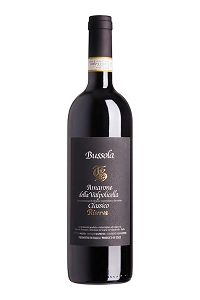
TB Amarone della Valpolicella Classico Riserva – Bussola 2013
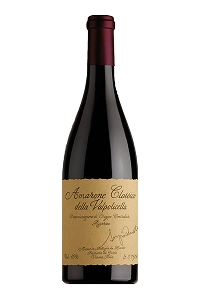
Zenato Amarone della Valpolicella Classico Riserva – Sergio Zenato 2018

Costasera Amarone della Valpolicella Classico Riserva DOCG – Masi 2017
How much is a bottle of good quality Amarone wine?
To make Amarone wines, Corvina, Rondinella, and other grape varieties are harvested, dried, and processed using special equipment. It is a long process that requires expertise for proper execution, and so Amarone wine prices are a fair amount.
Also, more grapes are used to make one bottle, compared to reds like Pinot Noir that don’t utilise dried grapes, which reflects in the expensive Amarone wine prices.
The older the vintage, the more lavish the wine is. However, you can expect to find comfortably priced Amarones such as the Amarone Tommasi wines below $100.

1. Entry-Level Amarone: Santi Santico Amarone della Valpolicella DOCG, 2018

2. Entry-Level Amarone: Tenuta Sant’Antonio Amarone Antonio Castagnedi DOCG 2019

3. Mid-Tier Amarone: Allegrini Amarone della Valpolicella Classico DOCG 2020

4. Single-Vineyard: Bertani Amarone della Valpolicella Classico DOCG 2015

5. Prestige Collector Bottles: Dal Forno Romano Monte Lodoletta Amarone della Valpolicella DOCG 2016
Pro Tip: the answer to the question ‘How much is a bottle of Amarone wine?’ depends on various factors, including vintage year, aging, terroir and the wine making process itself. You may opt for a less aged Amarone as the price tags are more convenient than older vintages.
Top 3 collection Amarone bottles for connoisseurs
Enthusiastic wine collectors can take advantage of Amarone’s iconic, long-standing wines. The elegant tastes of the most expensive Amarone wines are reflective of the careful preparation methods, the lengthy Appassimento process and they are worth the cost.
Below are 3 coveted bottles, rated highly by critics and valued by collectors.

Allegrini Amarone della Valpolicella Classico DOCG 2020
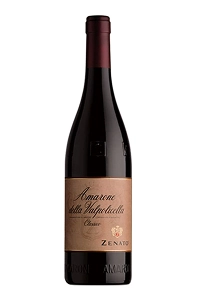
Zenato Amarone della Valpolicella Classico DOCG 2019
The best Amarone wine years: a vintage walkthrough
Whether you’re a wine collector, enthusiast, or sommelier, knowledge of the best years for Amarone wine will guide you to make the right choices. Amarone della Valpolicella wine is an age worthy wine with a longevity of up to 20 years. When looking up the best vintages, keep an eye on weather conditions, harvest quality and aging potential, as these vary each year and greatly affect the character and value of the wine.
Here is an overview of the best Amarone wine vintages and their standout features:
| Vintage | Recommended Amarone | Vintage Characteristics |
|---|---|---|
| 2020 | Tommasi Amarone della Valpolicella Classico 2020 | 2022’s Amarone wines are bold, fruity, and yet elegantly balanced with powerful tannins. |
| 2019 | Masi Costasera Amarone della Valpolicella Classico 2019 | Fantastic vintage, cooler start balanced out with a warm finish. Wines boast great complexity and concentration. |
| 2017 | Masi Costasera Amarone Classico Riserva 2017 | Sharp temperature changes helped grapes to ripen perfectly. Powerful, intense wines with robust tannins. |
| 2015 | Bertani Amarone della Valpolicella Classico 2015 | Perfect weather conditions, exceptional fruits led to an outstanding vintage. |
| 2012 | Bertani Amarone della Valpolicella Classico 2012 | Relatively low harvest yield, but outstanding wines with opulent aromas and great extracts. |
Amarone wines for beginners: start off on the right foot
As a beginner wine lover just getting into Amarone wines, you can choose to start with young or old Amarone, depending on your taste. The more complex notes of old Amarone contribute to a slightly bitter finish, while young Amarone on the other hand, is more fruity and bold. This wine is highly versatile and can be paired with various meals, including red meats, game, ripe cheese and even chocolate! Best served at 18-20°C / 64-68°F, Amarone should be decanted before drinking to allow aeration and the flavors to open.
Here is a table with our personal recommendations of the best meal types to pair with your Amarone drink.
| Amarone Style | Our Recommendation | Best to Pair with |
|---|---|---|
| Young Amarone (under 5 yrs) | Allegrini Amarone della Valpolicella Classico 2020 | Cured meats, aged cheeses, hearty pasta |
| Mature Amarone (10+ yrs) | Bertani Amarone della Valpolicella Classico 2012 | Braised meats, dark chocolate, hearty stews |
Amarone red wine glasses to add to your collection
Amarone red wine glasses are best oversized to allow full aeration and opening of the aromas of the wine. Some of our recommendations are:
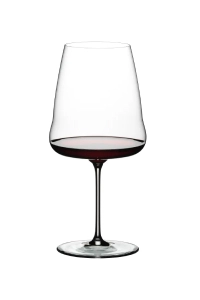
Riedel Wine Viewings Wine Glass
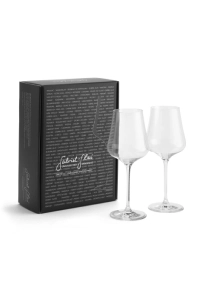
Gabriel-Glas StandArt Wine Glasses
Veneto: the only Amarone wine region
Dedicated vineyards in Valpolicella are the only sites where grapes for Amarone wine can be grown. The area’s cool lake breezes contrast nicely with the high summer sun. There are varying but favorable soil types, befitting the long ripening seasons needed to produce the medium-high acidic wines of Valpolicella.
The Amarone wine regions in Italy can be broadly divided into three, namely:
- Valpolicella Classica,
- Valpantena, and
- Valpolicella Allargata.
Amarone wines taste different depending on the communes where they are produced, and there are 5 core communes in the Classico subzone, renowned for the production quality of their wines. They are Negrar, Fumane, Marano, San Pietro in Cariano and Sant’Ambrogio. The terroir of individual Amarone wines determines taste, flavor complexity and pricing.
In summary, Amarone communities are:
- Fumane – Complete wines with a wide complexity.
Top vineyard: Villa Della Torre Allegrini - Marano – Elegant wines known for their structure and balance.
Top vineyard: Ca’ La Bionda - Negrar – Mellower tannins that taste better with aging.
Top vineyard: Tommaso Bussola - San Pietro in Cariano – Luxurious wines with a smooth, velvety mouthfeel.
Top vineyard: Villa San Pietro Winery - Sant’Ambrogio – Intense Amarones with depth.
Top vineyard: Tommasi - Valpantena – Produces lighter, floral, and more delicate styles.
Top vineyard: Bertani
Italian wine Amarone compared: how it stacks up against Barolo and Brunello
Amarone della Valpolicella DOCG is made mainly from Corvina grapes, strictly in the Veneto region of northern Italy. Valpolicella is a DOC region on its own, known for its hallmark highly acidic wines. Apart from Amarone, Italy boasts of other top-tier wines made from different grapes, such as Barolo made from Nebbiolo grapes, and Valpolicella wine produced in the named region.
Have a look at the Italian wine Amarone and how it stacks up against its counterparts.
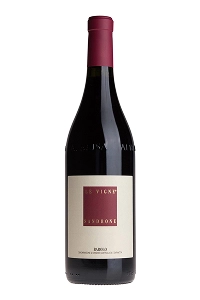
Sandrone Barolo Le Vigne 2019
Flavor: Highly acidic, bold tannins with fruity flavours.

Castello Romitorio Brunello di Montalcino Filo di Seta 2019
Flavor: Medium to high tannins, acidic, notes of wild berry.

Tommasi Rafael Valpolicella Classico Superiore 2021
Flavor: Refined and intense nose, vibrant fruits and floral notes.
How to serve Amarone Classico wine
An Amarone classico wine from a good vintage, or a well-aged Riserva, will develop elevated aromas and flavors when served correctly.
- Store in a dark environment between 15-22°C/59-72°F
- Serve at 18-20°C / 64-68°F
- Decant young Amarone for at least 1–2 hours
- Decant aged Amarone for at least 1 to 3 hours
Pro tip: Pour young Amarone in fast to ensure it comes in contact with as much air as possible to enhance the flavors. Use a wine aerator to improve aeration. After decanting, taste the wine every 25 minutes to be sure the flavors are opening.
Amarone wine pairing essentials
With its bold structure, rich dried fruit notes and velvety intensity, Amarone wine demands thoughtful pairing. From robust meats to aged cheeses and even some surprising sweet-savory combinations, here are the essential tips to pairing Amarone like a pro.
| Food | Best Bottle | Aged | Type & Structure |
|---|---|---|---|
| Chicken, Turkey, Duck, Rabbit | Bertani Amarone della Valpolicella Classico DOCG 2015 | 6 – 8 years – ABV 14% | Dry, fruity, tannic |
| Cured Meats & Cold Meats | Serego Alighieri Vaio Amaron Amarone della Valpolicella Classico 2015 | 3 – 4 years – ABV 15.5% | Dry, complex, elegant |
| Steak, Roasts, Braised Meats, Wild Game | Speri Sant’Urbano Amarone della Valpolicella Classico 2019 | 3 – 4 years – ABV 15% | Vigorous structure, fine tannins, warm |
| Aged Cheese, Roquefort, Parmigiano Reggiano, Cheddar, Gouda | Bussola Amarone della Valpolicella Classico 2019 | 4 – 5 years – ABV 17% | Bold, intense fruits, velvety tannins |
| Pasta, Risotto, and Baked Casseroles | Pasqua Amarone della Valpolicella DOCG 2019 | 2 – 3 years – ABV 15% | Dry, fruity, notes of vanilla |
| Hamburgers and comfort food | Tenuta Sant’Antonio Amarone Antonio Castagnedi DOCG 2019 | 2 – 3 years – ABV 15% | Dry, fruity, hints of pepper |
Key accessories to serve the best Amarone wine
Drinking Amarone wine is a fantastic experience, and the right Amarone wine kit takes it one step further. You want to decant the wine and serve it in an oversized glass like the Bordeaux wine glass, which allows you to enhance its aromas. Always serve Amarone at the right temperature, 18-20°C / 64-68°F as over-chilling or over-warming can destroy the taste.
Here are some essential serving accessories to savor the best Amarone wine:
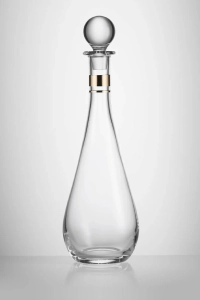
Wine Decanter
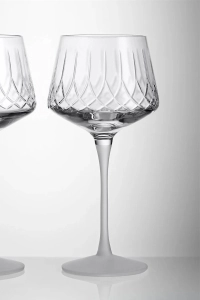
Large Bowl Glasses
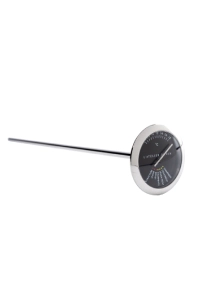
Wine Thermometer
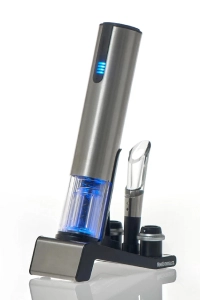
Wine Preserver
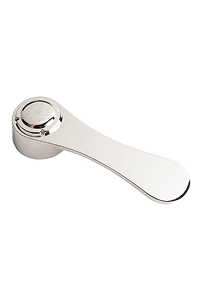
Bottle Opener
Pro tip: let older wines sit for about a day before opening to allow the grape sediment to settle.
FAQs Best Amarone wine
What is a good Amarone wine?
What makes a good Amarone wine is dependent on a lot of factors, including the vintage year and its unique conditions, terroir, storage conditions, aging and the quality of the grapes. Some of our favorite Amarone wines include Masi Costasera Amarone della Valpolicella Classico DOCG 2019, Dal Forno Romano Monte Lodoletta Amarone della Valpolicella DOCG 2016 and Bertani Amarone della Valpolicella Classico DOCG 2015.
What is the best Amarone wine food pairing?
Amarone wine food pairings include rich and savory dishes such as grilled red meats, steak and venison. You may open up an Amarone wine Classico for anniversary celebrations, served with pasta and a savory sauce. A bottle of Amarone also pairs perfectly with ripened Parmesan cheese and other aged cheeses. Some people also enjoy their Amarone with dark, bittersweet chocolate!
What are the Amarone wine grapes?
The Amarone wine grapes include 45-95% Corvina, 50% of which can be replaced with Corvinone, its twin variety. There are also varying quantities of Rondinella, and the rarer Oseleta and Molinara. Amarone is a blended wine from the Valpolicella region of Northern Italy, and it is of the DOCG status with strict rules guiding its production.
What are the best years for grapes in Amarone wine?
The best years for grapes in Amarone wine are determined by a lot of factors, including the weather conditions, the time of harvest, and the features of the terroir in that year. Fermentation and storage conditions also have a part to play. For instance, 2015 yielded almost perfect, exceptional Amarone wines due to the ideal weather conditions of that year. A top recommendation is Bertani Amarone della Valpolicella Classico 2015.
What are the best Amarone style wine vintages?
The best Amarone style wine vintages include the 2015, 2016, 2010, 1998, and 1996 vintages. 1998 Amarone is luxurious and refined, with opulent aromas after being grown in the optimum weather conditions. In 2017, the temperatures changed significantly, but this helped to produce powerful and intense wines with robust tannins. An all-time favorite is the Masi Costasera Amarone Classico Riserva 2017.
Where is Amarone wine from?
The answer to the question ‘Where is Amarone wine from?’ is Veneto! Yes, Amarone wine is produced in Valpolicella, in the Veneto region of Italy. The grapes that are vinified to produce this dry wine are strictly grown in Valpolicella, according to regulations. The cool breezes and high sunlight of the terroir, along with its favourably acidic soils, all contribute to the making of the most critically acclaimed Amarone wines.
What are the best Amarone producers?
The best Amarone producers include iconic brands like Dal Forno Romano, Giuseppe Quintarelli, Masi, and Bertani, the oldest winery in Valpolicella founded in 1857. Other notable producers include Allegrini and Tenuta Sant’Antonio. These best Amarone brands are synonymous with high quality and expertise, with a long history of using craftsmanship and the best grapes in their region to produce exceptional wines.
What is Amarone wine?
Amarone della Valpolicella (or simply Amarone) is a dry red wine from the Veneto region of Northern Italy. It is exclusively produced in Valpolicella, one of Italy’s most popular winemaking districts. Amarone, which translates to ‘great bitter,’ has a bold taste with notes of plum, spice, and dried fruit. It is a wine type marked by a luxurious intensity and bold, full-bodied structure. An excellent pair to slow braised pork, ribs, or steaks.
Should Amarone wine be chilled?
The optimum serving temperature for Amarone red wine is 18-20°C / 64-68°F, and it should be stored in a cool, dark room or cellar. Amarone does not necessarily require chilling, but you may pop it in the fridge for a few minutes to lower the temperature until it’s at the optimum conditions for serving. A drink well-suited to date nights, pair a glass of this dry red with grilled meats or ripe cheeses.
Is Amarone a sweet wine?
Amarone della Valpolicella is a red wine from the Valpolicella area of Veneto, Italy. It is made from partially dried grapes of the Corvina and other grape varieties with the Appassimento method. Amarone is not a sweet wine, but it cannot be described as bitter. The Amarone wine taste is a bold, dry one. This is a result of the fermentation process that has reduced the amount of residual sugars.
How much does Amarone wine cost?
Generally, a bottle of Amarone wine costs between $50 – $500 or higher, depending on the depth of knowledge, special manufacturing techniques, and the cost of the grapes required in the process. The grapes are harvested and dried until they lose 40% of their moisture, after which they are vinified. This means that more grapes are used to make a bottle of wine. The terroir and winery also play a part in price determination.
What kind of wine glasses should you use for Amarone?
For ultimate enjoyment and pleasure, use an oversized wine glass to drink Amarone and similar wines with complex tasting notes. The Bordeaux wine glass is the best Amarone della Valpolicella wine glass, with its broad and tapering bowl that collects and fully concentrates the complex aromas of this wine. A pro tip is to swirl your wine as you take sips of it to allow full aeration.
Is Amarone a white wine?
Amarone della Valpolicella, simply called Amarone, is a rich, dry red wine of DOCG status. Amarone is made mainly from Corvina grapes grown in Valpolicella. The Italian red wine Amarone can be of two styles, namely Rosso, which is aged for a minimum of 2 years, and Riserva, aged for at least 4 years. A powerful, bold red wine best paired with rich dishes such as game meat and aged cheeses.
Is Amarone a dessert wine?
Typically, Amarone is not a dessert wine, as the grapes are partially dried and allowed to ferment for longer to let the alcohol replace the sugars. Rather, it is a dry, full-bodied wine type. Amarone wine has a high alcohol content that makes it taste sweeter than other dry reds. Residual sugar per liter is typically about 6 grams, and Amarone is best paired with equally rich foods like game, braised meats, and aged cheeses.
Is Amarone wine produced in Australia?
No, Amarone wine is not produced in Australia. Amarone della Valpolicella is exclusively made in the Veneto region of northern Italy from Corvina, Corvinone, Rondinella, Molinara, and Oseleta grapes. An expressive, full-bodied wine known for its elegant structure, strong aging potential, and bold taste, Amarone is the most treasured wine of Valpolicella.
How is Amarone wine made?
Amarone della Valpolicella is made using a unique process, called the Appassimento method. It entails harvesting grapes and then drying them until a large percentage of their moisture is lost. After drying, they are crushed, fermented and aged until we get the special dry, treasured red wine. The process ensures that the flavors and sugars of the wine become concentrated enough to create a full-bodied, bold wine with notes of spice, leather, and chocolate.

